The Vacheron Constantin 1955 Cornes de Vache, and Milestone Vintage Chronographs from the Museum
A look at VC's most desirable current chronograph watch, and some of the most glorious vintage models that inspired it.
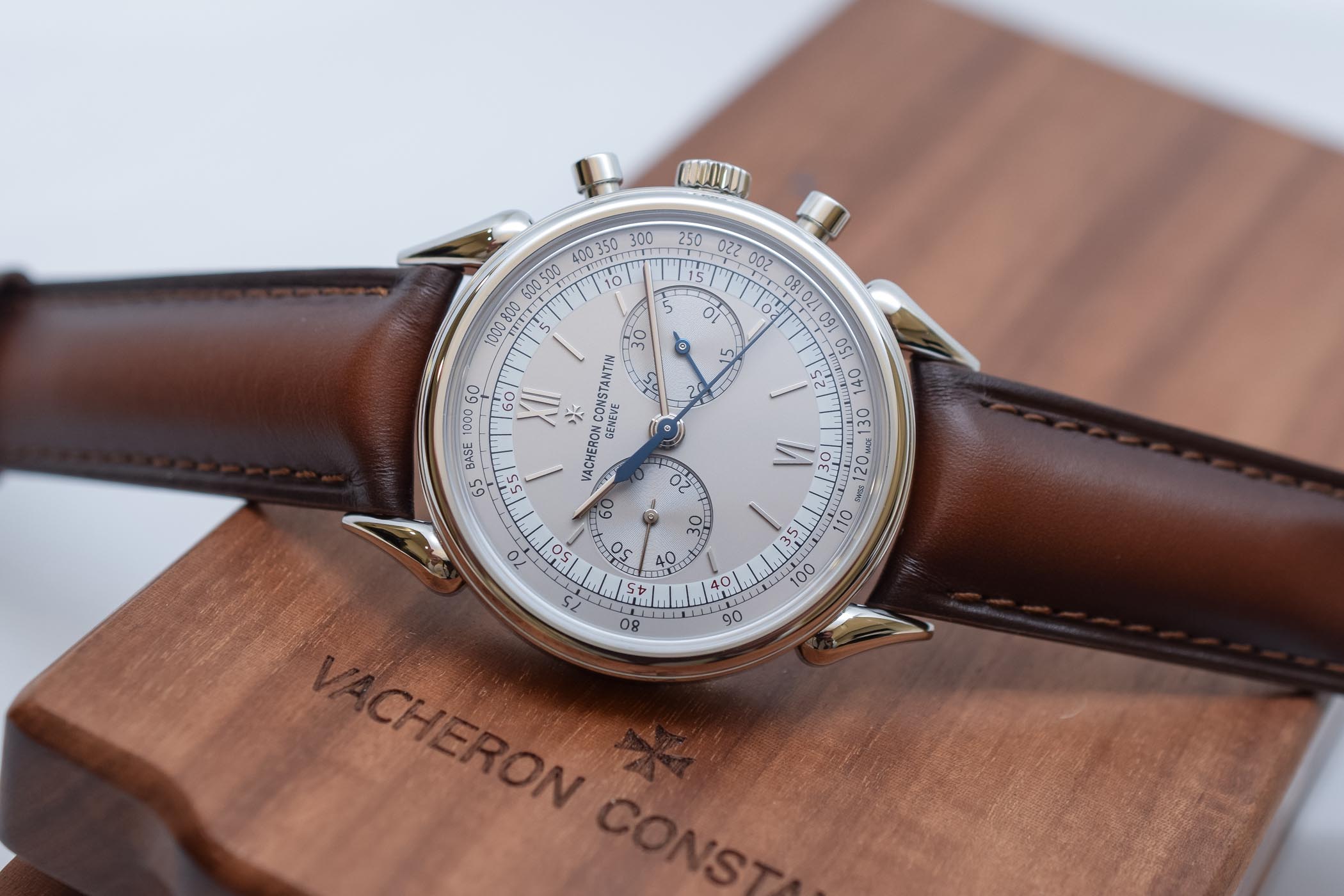
Based on the vintage reference 6087, a watch launched in 1955, the modern so-called Cornes de Vache is, without doubt, one of the most sought-after Vacheron Constantin Chronographs. Available only in platinum or pink gold until very recently, a new steel version has recently been introduced… but given the limited production and great demand, it is very difficult to find. On the occasion of a visit to the Manufacture, we have taken a look at some milestone watches from the Vacheron Constantin museum collections to better understand the genesis of this superb chronograph.
POCKET CHRONOGRAPHS
As you would expect from the oldest watchmaker that has been in production without interruption, Vacheron Constantin has a rich history in chronographs (and in watches in general). The company produced dead-beat seconds pocket watches, often regarded as the ancestor of the chronograph, as early as 1819 – with an independent dead-beat seconds powered by a dedicated gear train.


Still, the history of the Vacheron Constantin chronograph – real ones, this time – starts in the second half of the 19th century. The first known Vacheron Constantin chronograph, a hunter-type gold pocket watch sold in the United States, was produced in 1876.
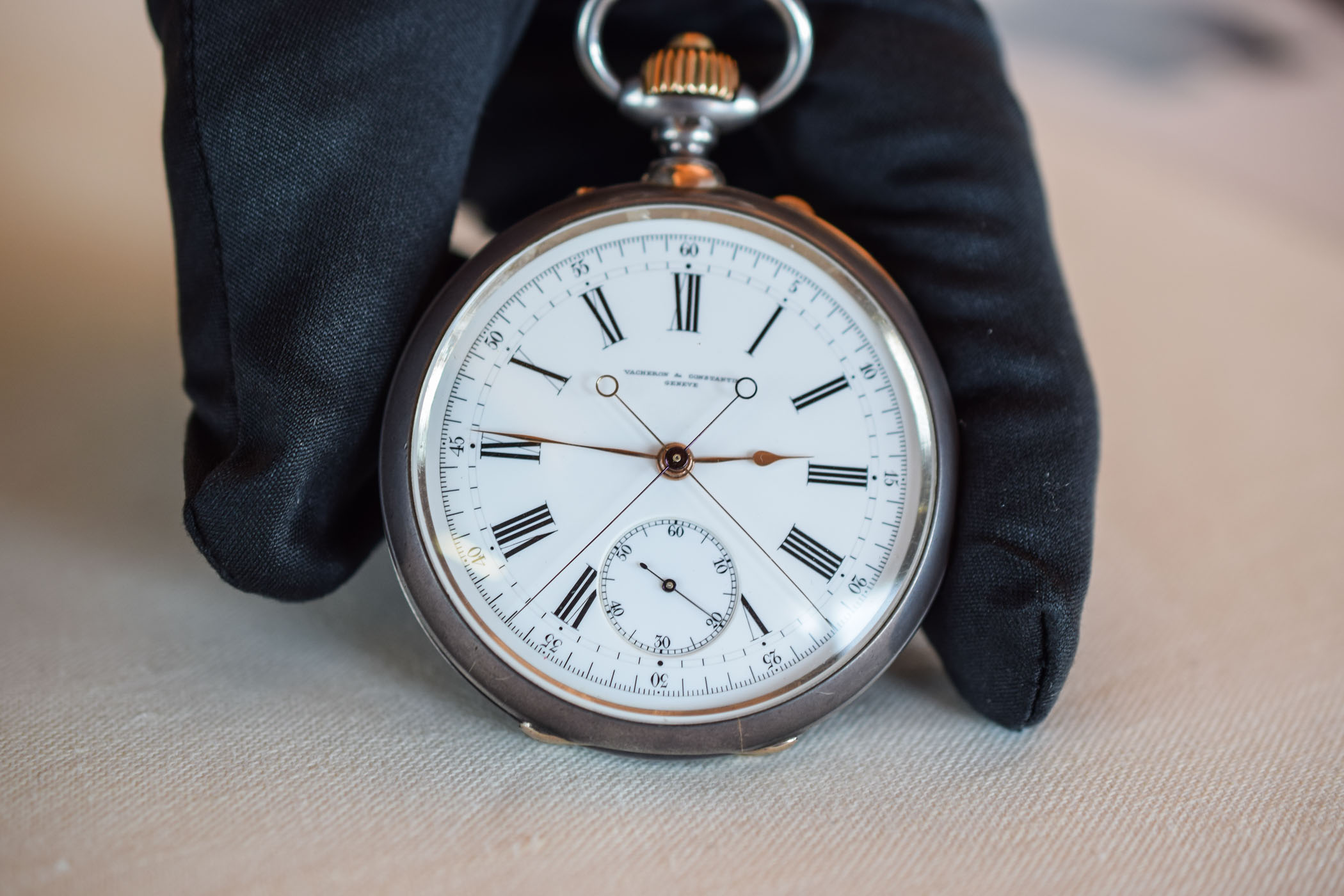
Soon after, in 1889, the brand manufactured its first split-second (rattrapante) chronograph, a pocket watch sent to Buenos Aires for a horse racing enthusiast. It was only a few years after the apparition of the first split-seconds chronograph.

Another notable example was the 1917 commission from the American Army for 5,000 chronographs for its Corps of Engineers engaged in the process of reconstruction in Europe. Over 3,000 silver chronographs with radium dials were delivered until 1919.
POST-WWI – FIRST WRIST CHRONOGRAPHS
The first Vacheron Constantin wrist chronograph dates back to 1917 with a single-push piece gold model with a minute counter. Naturally, this early chronograph with thin, short lugs still reminds of a hunter pocket watch chronograph. The first part of the 20th century witnesses the advent of wristwatches whose practical and functional side paved the way for instrument watches, designed for specific purposes, including chronographs. Vacheron Constantin was no exception to this trend.


Housed in robust cases made from gold or, more rarely, from stamped steel, they stood out with their uncluttered aesthetic. The first chronographs sporting two push buttons appear in the 1930s (one for the start/stop function, the other for the reset function – an invention of Breitling). Among the highlights of the period, references 4072 and 4178, well known among collectors, are still regarded today as particularly significant pieces within the heritage of the Maison.

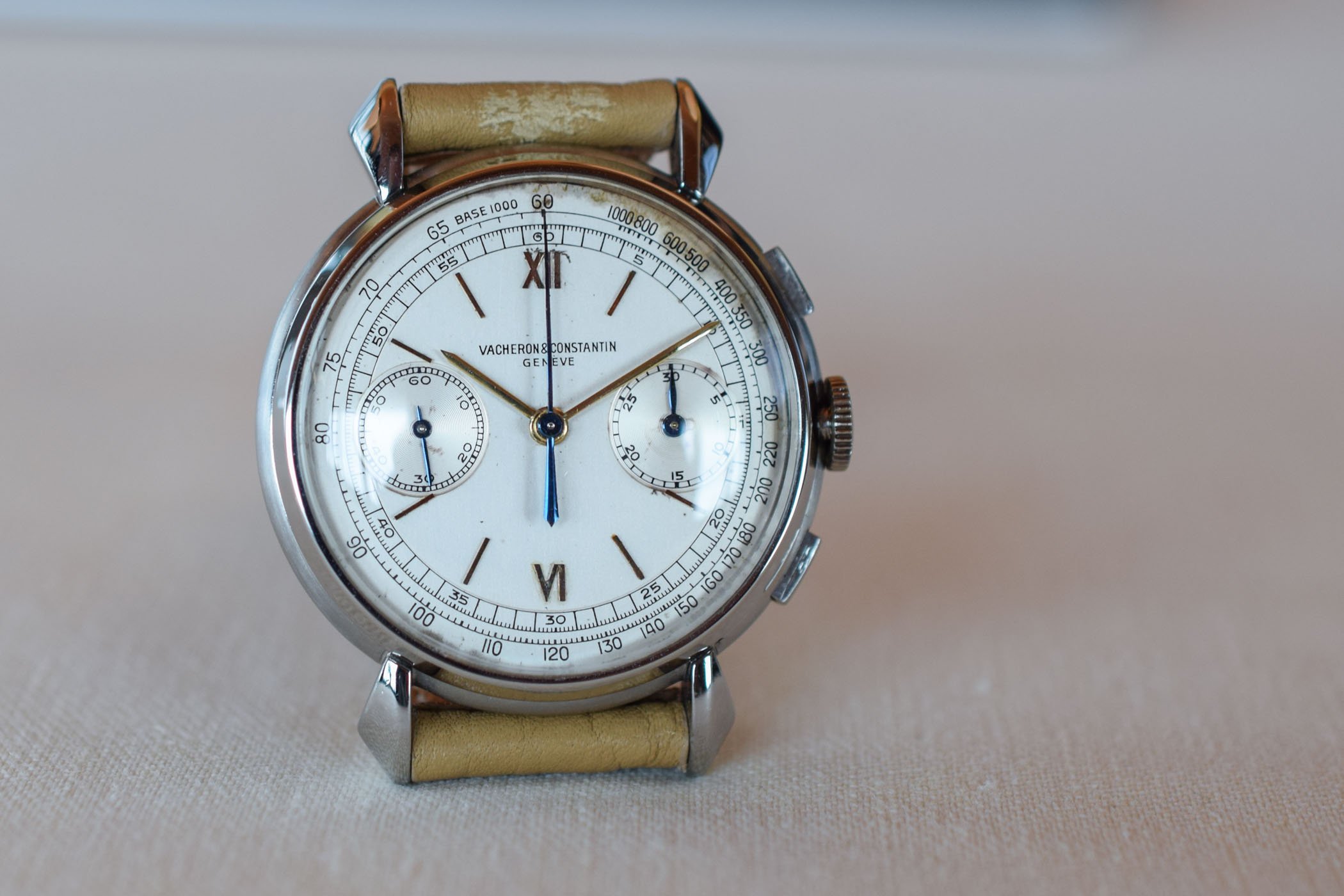
1940S and 1950S – A CREATIVE MOMENTUM
The 1940s and 1950s witnessed great creativity and were marked by the incredible number of variations in the overall aesthetics of Vacheron Constantin’s wristwatches and wrist chronographs – in particular through case designs and sophisticated lug styles. Impelled by this creative momentum, the brand created a number of exquisite watches, among which the 1955 reference 6087, known today as the Cornes de Vache (cow horns).
Presented the year of Vacheron Constantin’s 200th anniversary, the reference 6087 was the brand’s first waterproof and amagnetic chronograph. Its technically complex construction included a screwed caseback and a soft-iron inner protection for its calibre 492, a classic hand-wound and column-wheel movement based on a Valjoux ébauche. This was the prevailing norm back in the 1940s and 1950s when most high-end brands relied on specialist movement maker Valjoux for chronograph movements. Back in the days, the notion of in-house movements was not really a familiar concept in watchmaking.
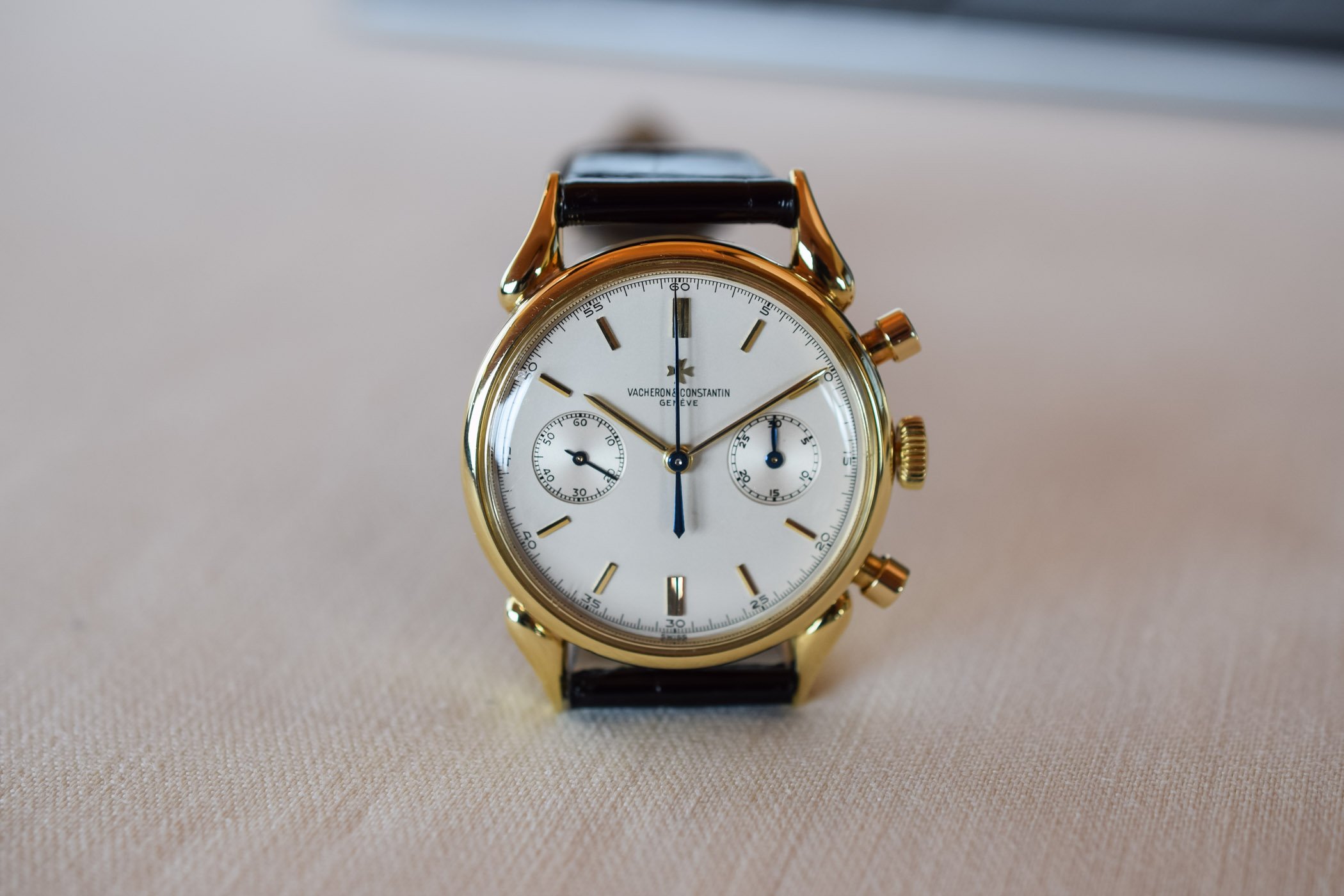
The Vacheron Constantin Chronograph reference 6087 Cornes de Vache was produced in yellow gold, pink gold and platinum. No more than 36 pieces were manufactured in total, making it an extremely desirable and valuable piece – it can easily fetch six-figure prices at auctions, like this example sold by Phillips.
THE MODERN Chronograph CORNES DE VACHE
The second life of the Chronograph Cornes de Vache began in 2015 when Vacheron Constantin released the reference 5000H, a watch greatly inspired by the reference 6087. The model opts for a larger – but still elegant – diameter of 38.5mm – versus 35mm for the 1955 model. The first version of this watch, manufactured in platinum, featured a silver opaline dial with Roman numerals and a tachymeter scale – the original reference 6087 was made with several dials, with or without additional scales. It was followed in 2016 by an 18k pink gold model, again with an opaline silver dial.
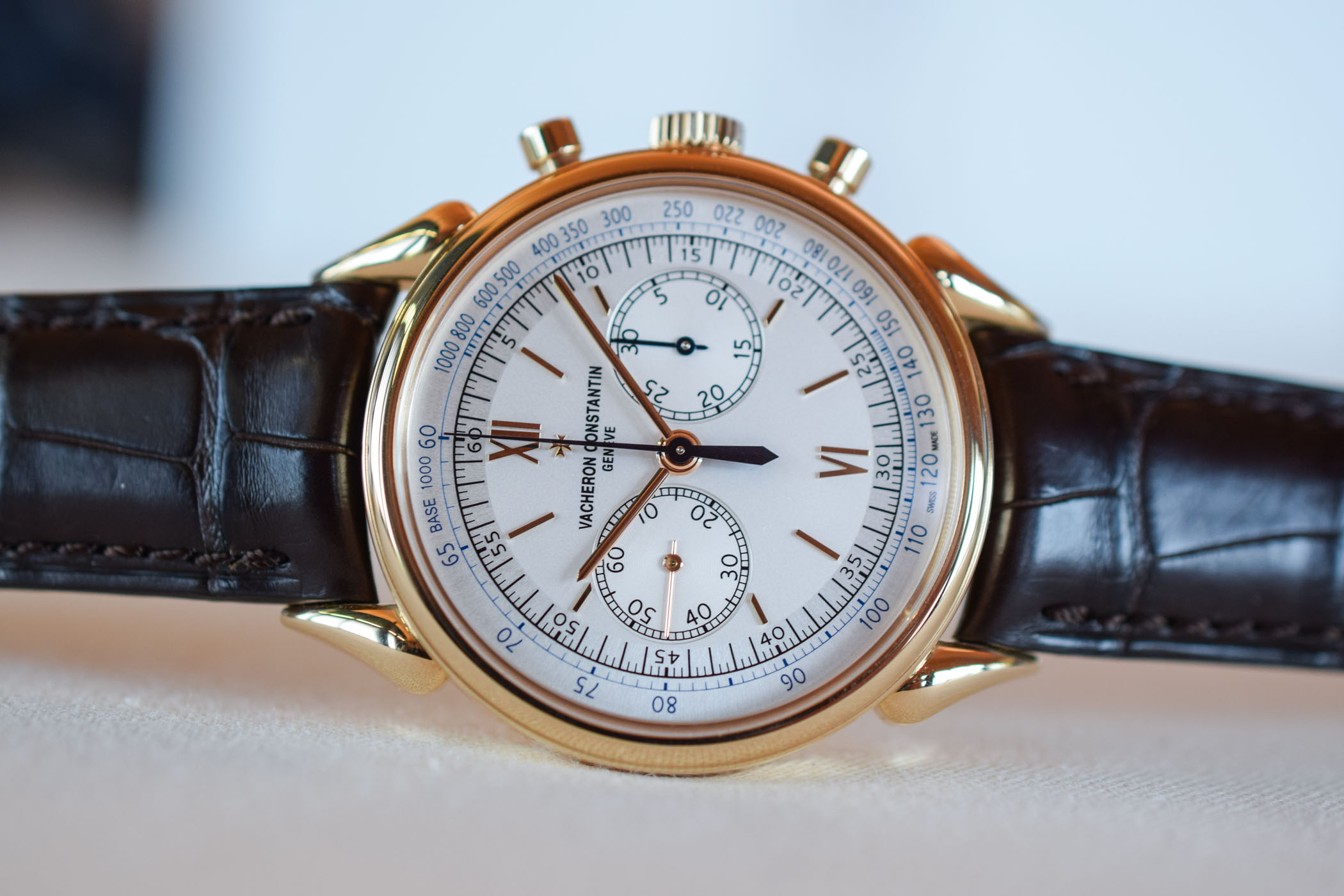

The movement found in the modern Chronograph Cornes de Vache is the superb hand-wound calibre 1142, produced in-house and based on the Lemania 2310 dating from the 1940s. While not historically relevant (not Valjoux-based), this movement has a classic, old-school architecture with column wheel and horizontal clutch and perfectly fits the overall vintage-inspired concept of the Cornes de Vache Chronograph.
Launched in September 2019, the new steel version retains much of the attributes of the precious metal models. The same case design and diameter, the same dial layout and the same movement, however with a two-tone opaline dial.

The Vacheron Constantin Chronograph Cornes de Vache 1955 in steel is worn on a brown calf leather strap manufactured by Serapian, a high-end Italian leather goods Maison recently acquired by Richemont. Price is set at CHF 42,600. While it is not exactly cheap, it certainly is an attractive offer in comparison to other top-tier chronograph makers… and if you can afford it, you’ll end up with an extremely elegant timepiece from a brand with one of the richest pedigrees in chronographs.
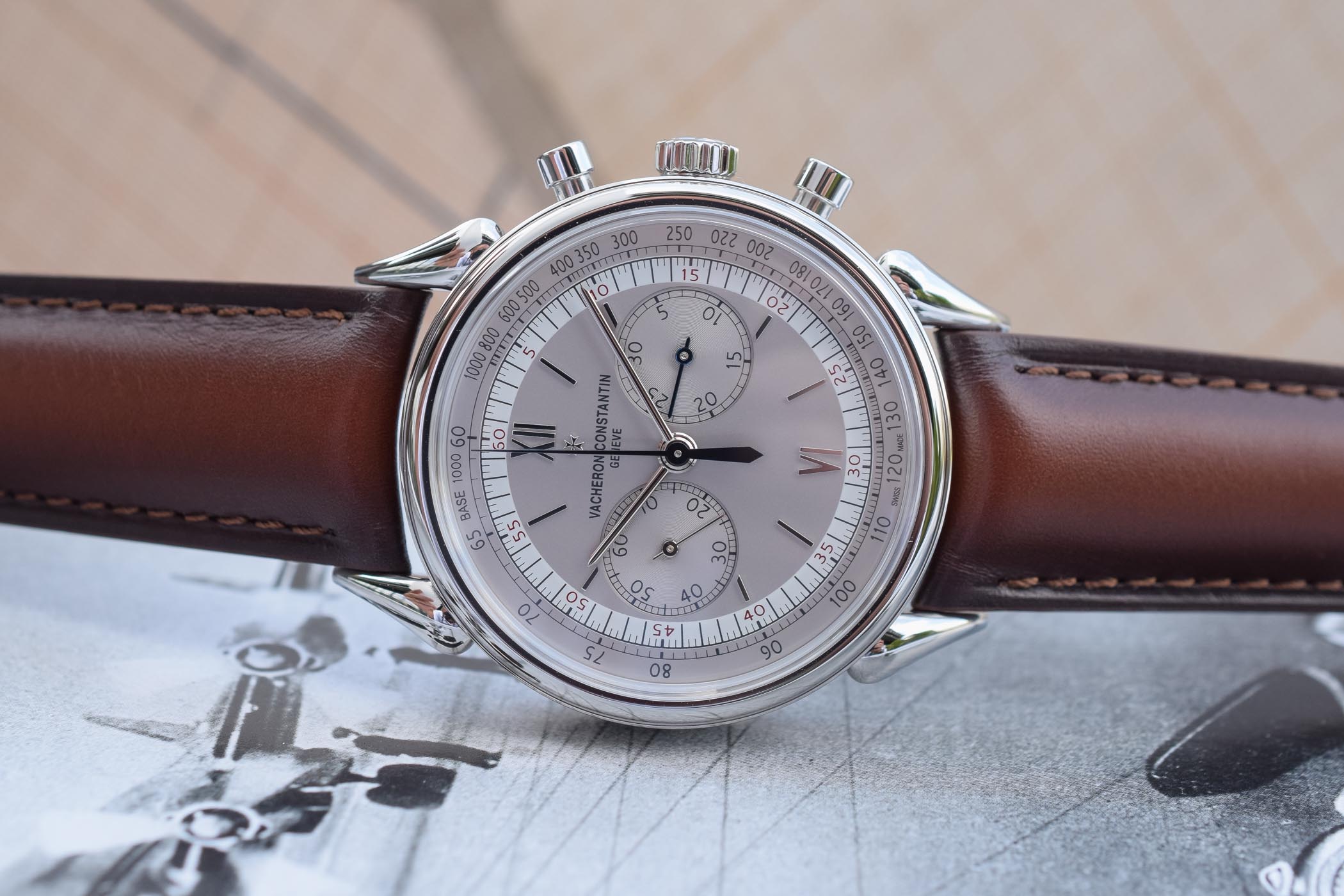
For more information, www.vacheronconstantin.com.
Current Vacheron Constantin Chronograph Movements
Vacheron Constantin pride themselves, with reason, on a rich chronograph movement portfolio. The brand manufactures a variety of calibres, some integrated automatic, some old-school hand-wound, some equipped with great complications…
Among these, the calibre 1142 is a classic movement, typical of the 1940s. Based on the Lemania 2310, it is manufactured in-house by Vacheron Constantin. It is the successor of the Calibre 1141, upgraded to the Geneva hallmark specifications. Specs 1142: hand-wound movement – 27.5mm x 5.57 mm – 21,600 vibrations per hour – 48h power reserve – 21 jewels – column-wheel and horizontal clutch chronograph, hours, minutes and small seconds – Hallmark of Geneva
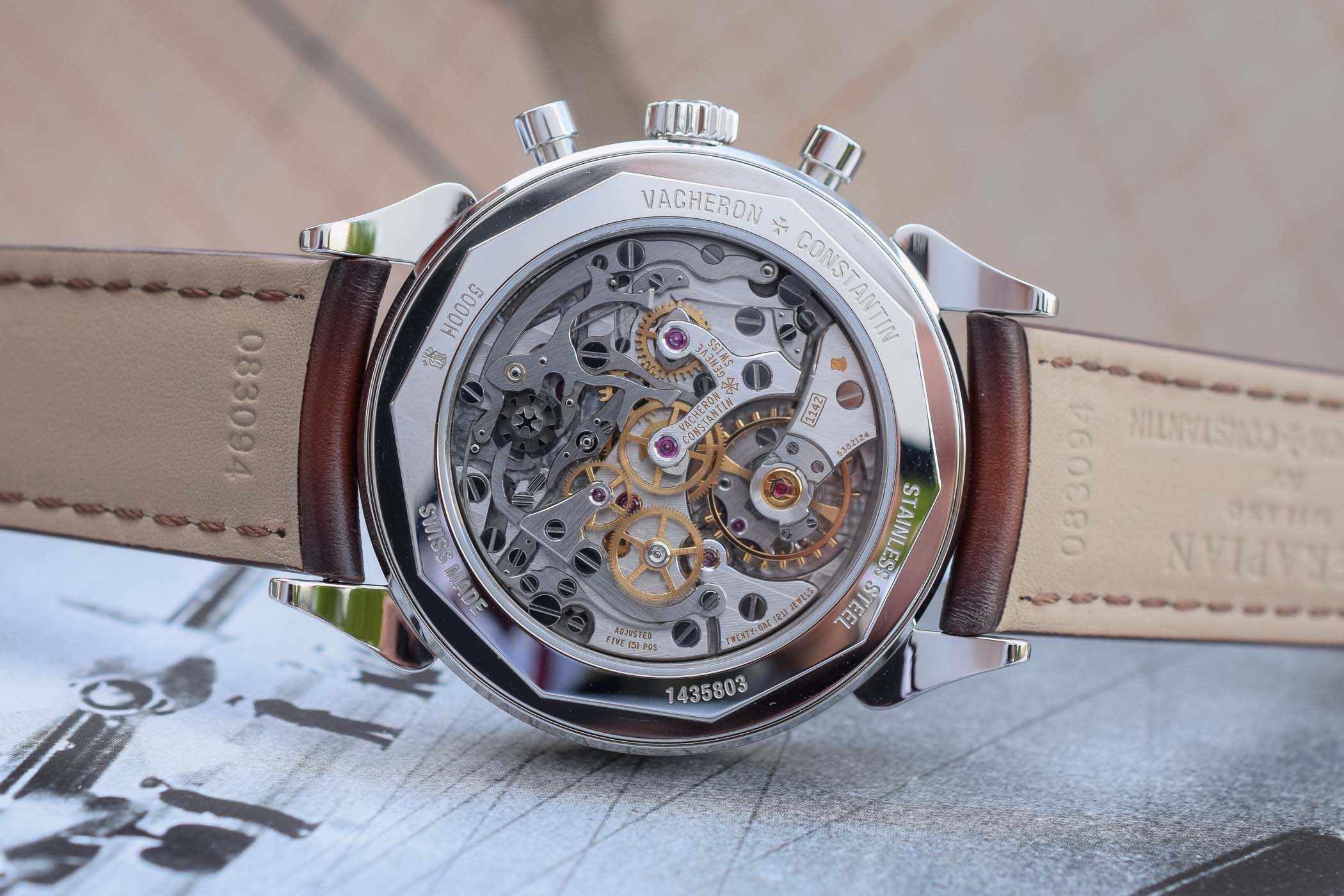
The Calibre 5200 is a modern automatic chronograph that was presented in 2016 to power the Overseas. Specs 5200: automatic movement – 30.6mm x 6.60mm – 28,800 vibrations per hour – 52h power reserve – 54 jewels – column-wheel and vertical clutch chronograph, hours, minutes, small seconds, date – Hallmark of Geneva
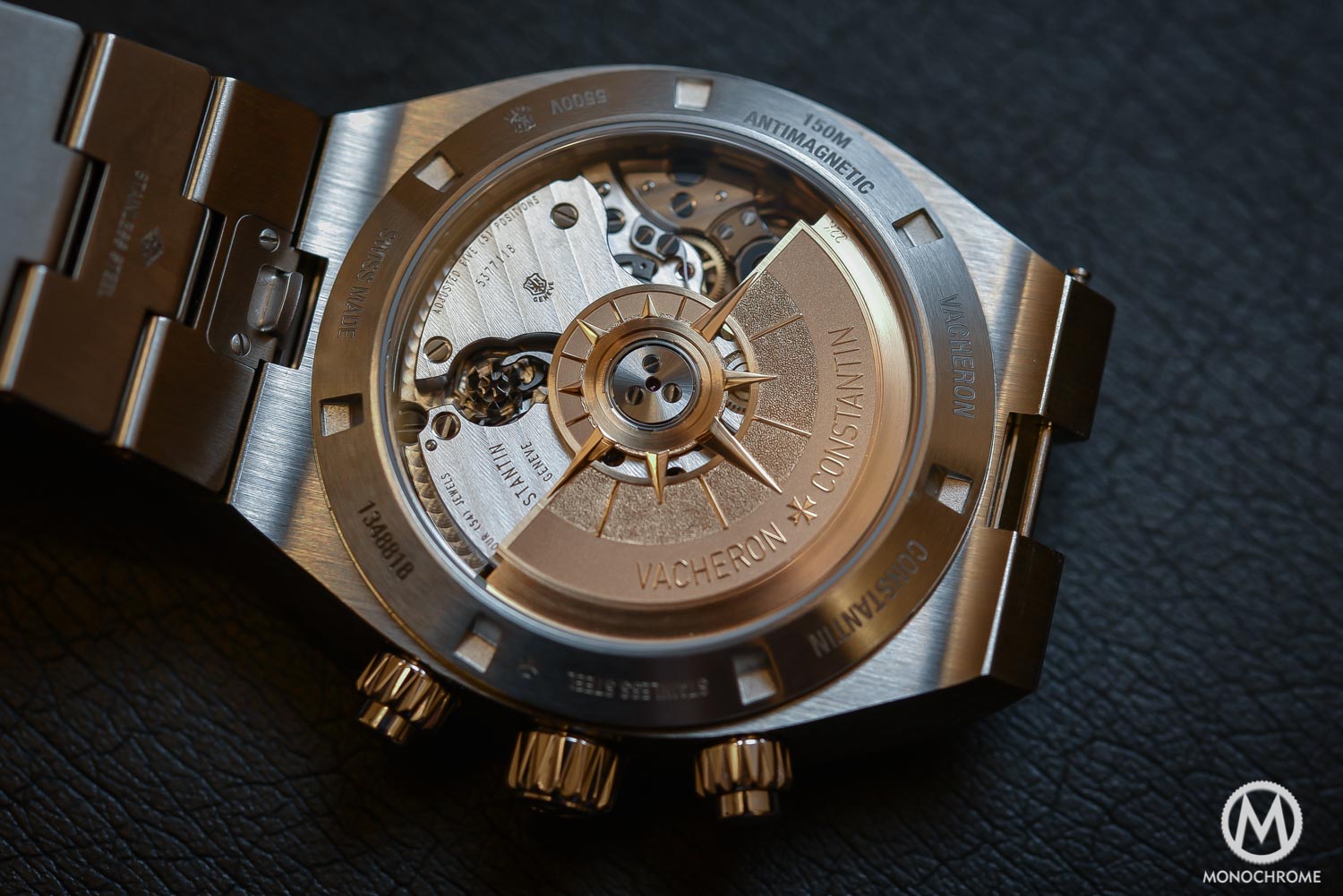
Presented in 2015, the calibre 3200 (tourbillon escapement) and calibre 3300 are hand-wound mono-pusher chronographs with column-wheel and horizontal clutch. Specs 3200: hand-wound movement – 32.80mm x 6.70mm – 18,000 vibrations per hour – 65h power reserve – 39 jewels – mono-pusher chronograph column-wheel, horizontal clutch, hours, minutes, small seconds, power reserve indicator, tourbillon – Hallmark of Geneva. Specs 3300: hand-wound movement – 32.80mm x 6.70mm – 21,600 vibrations per hour – 65h power reserve – 35 jewels – mono-pusher chronograph column-wheel, horizontal clutch, hours, minutes, small seconds, power reserve indicator – Hallmark of Geneva
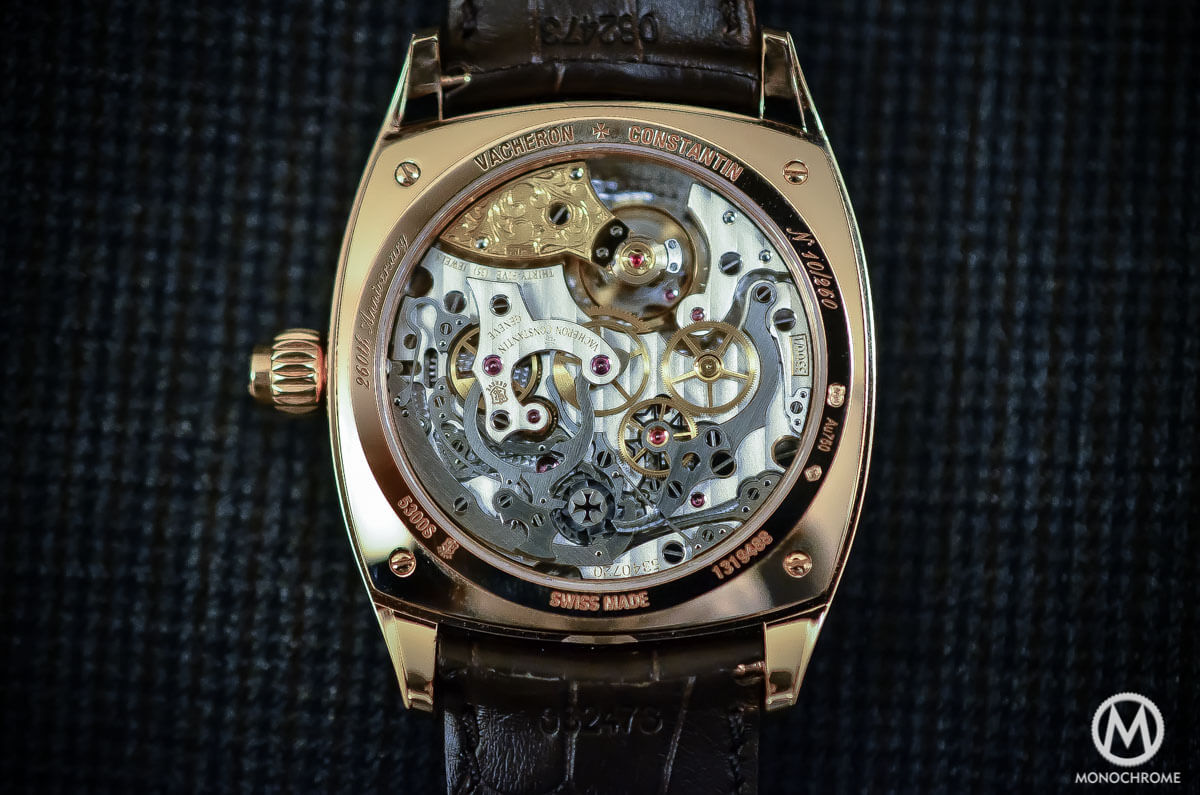
The brand also manufactures some speciality chronographs such as the calibre 3500/260, an extra-thin split-seconds chronograph or the mechanism of the reference 57260 whose impressive list of complications includes a retrograde seconds split-seconds chronograph.
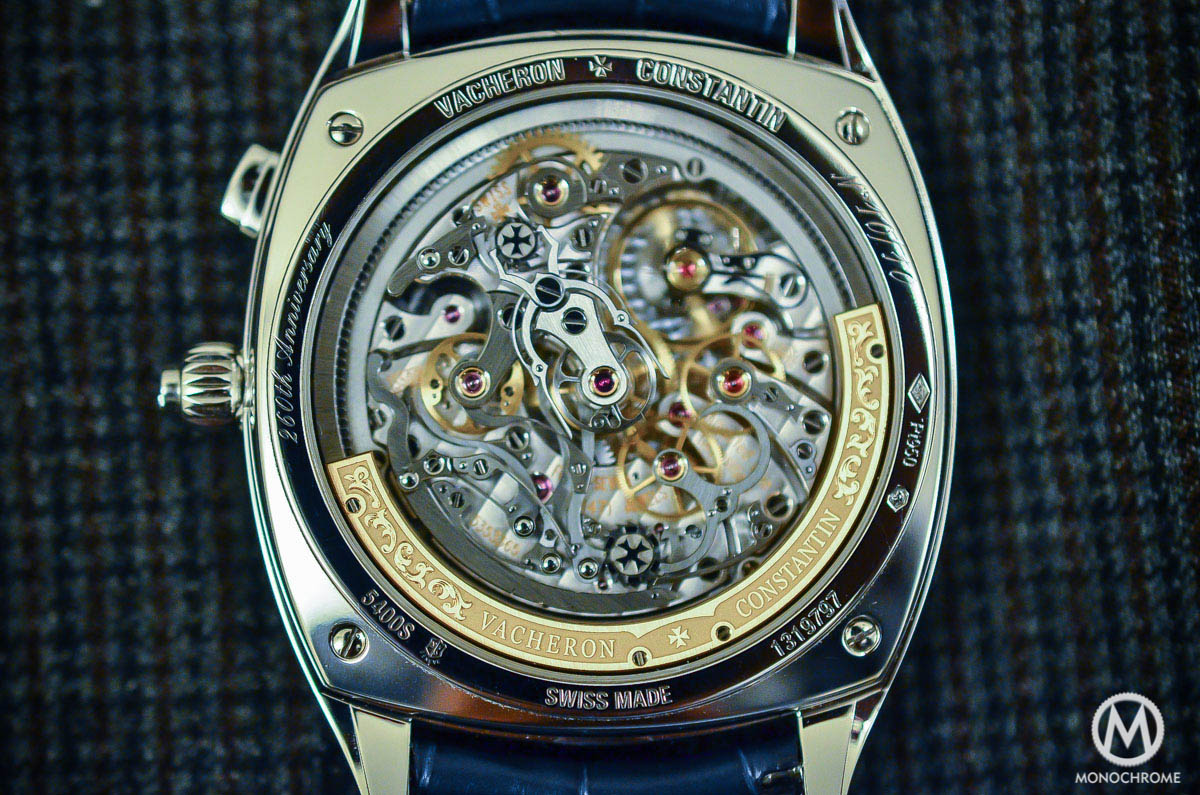

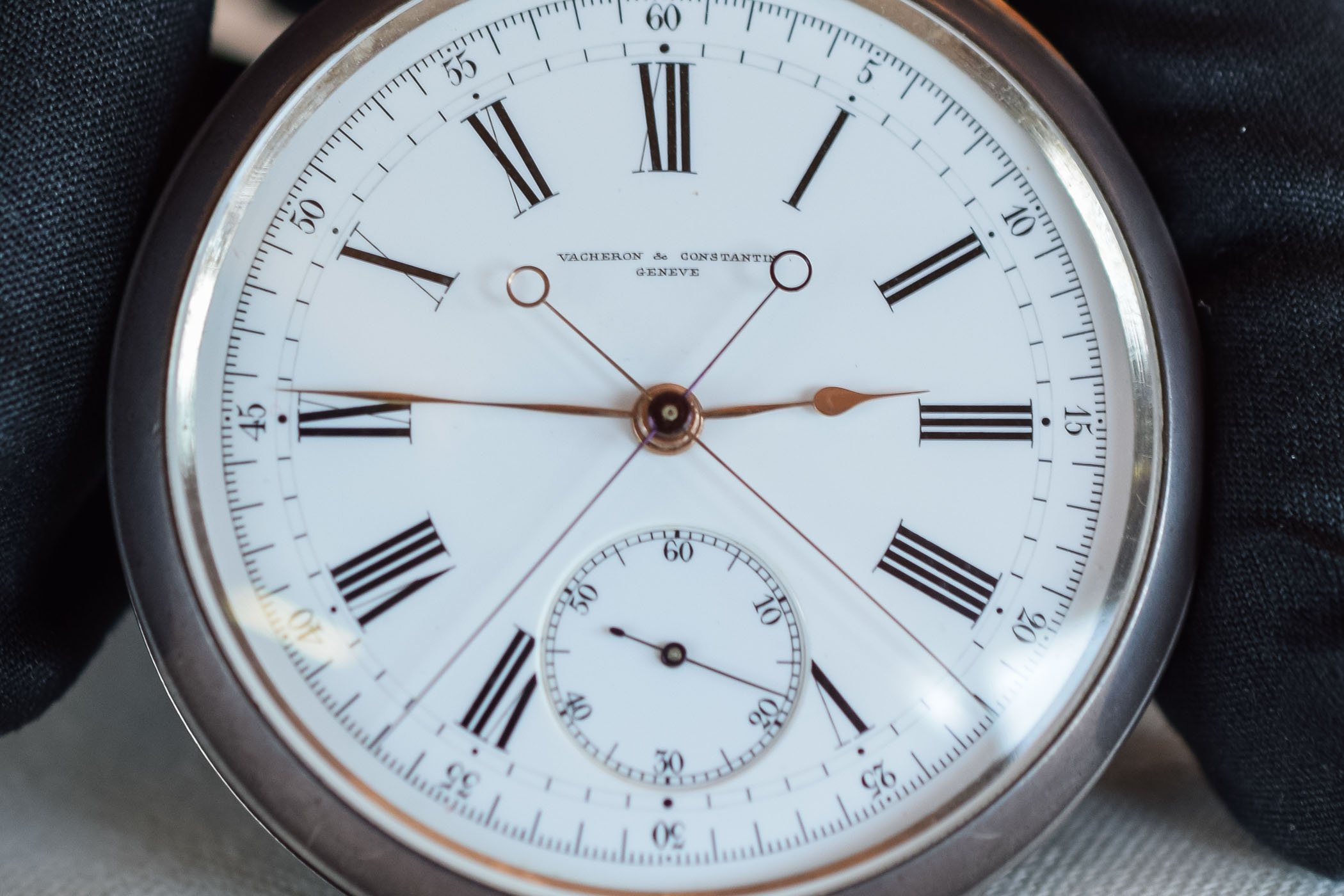
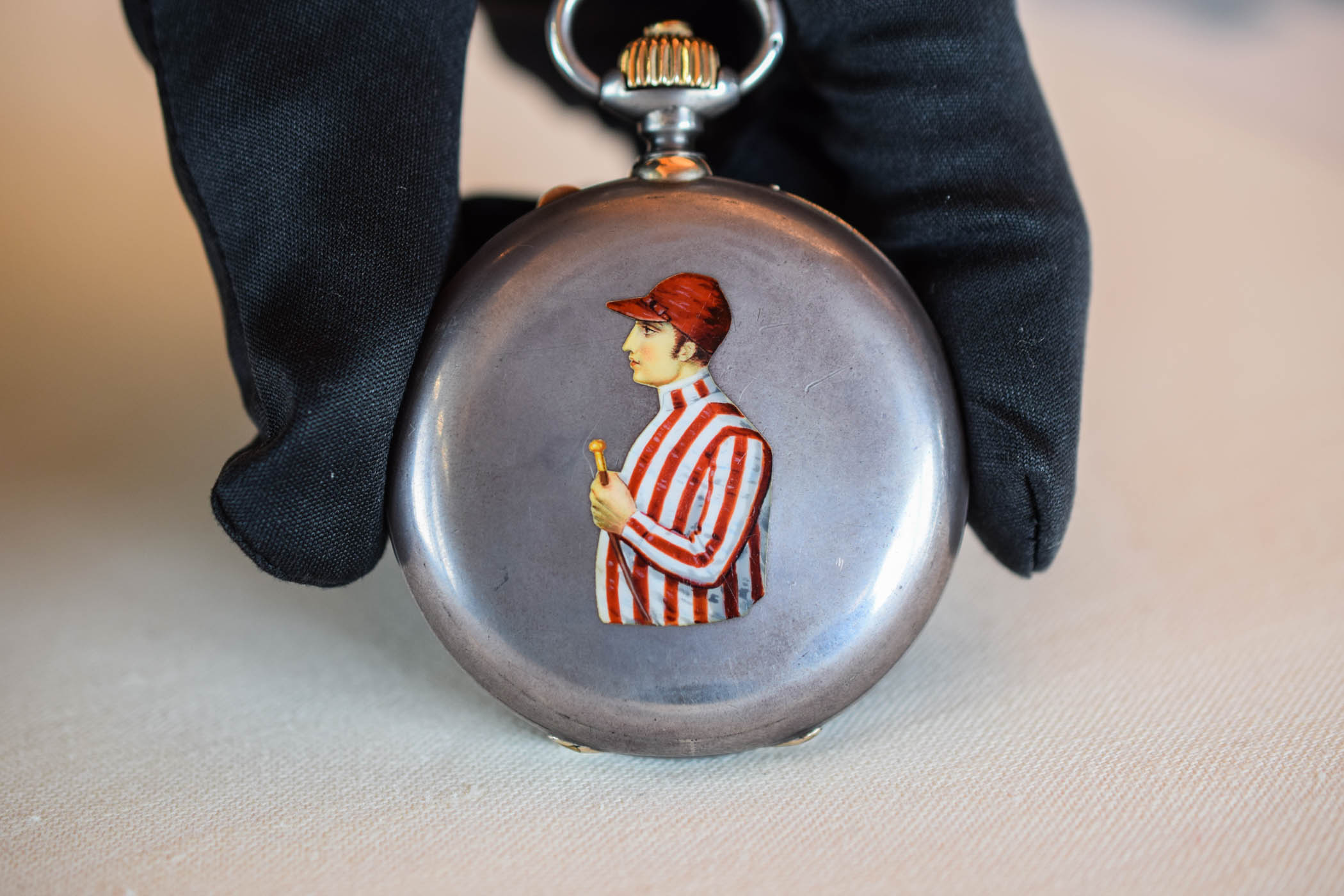

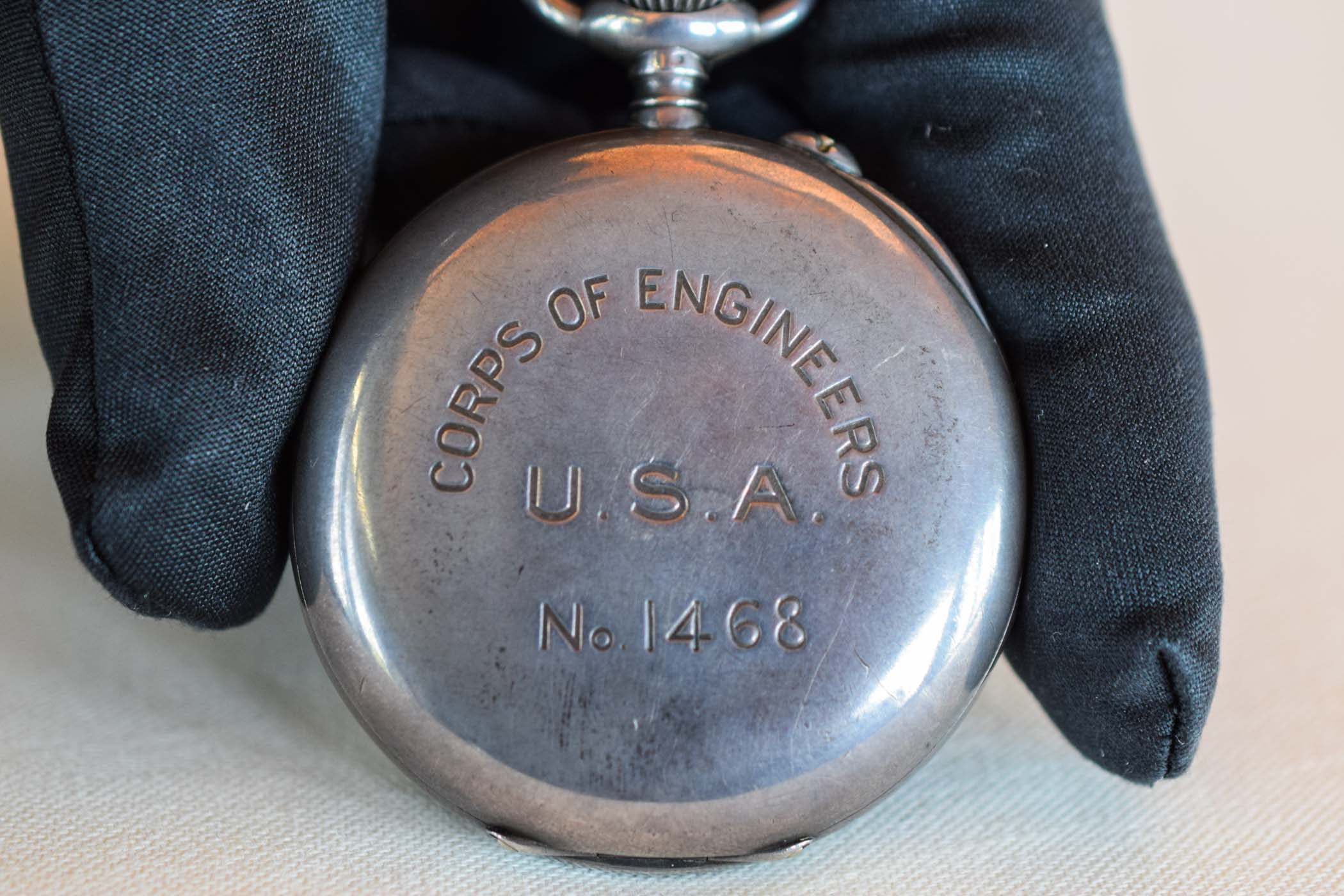


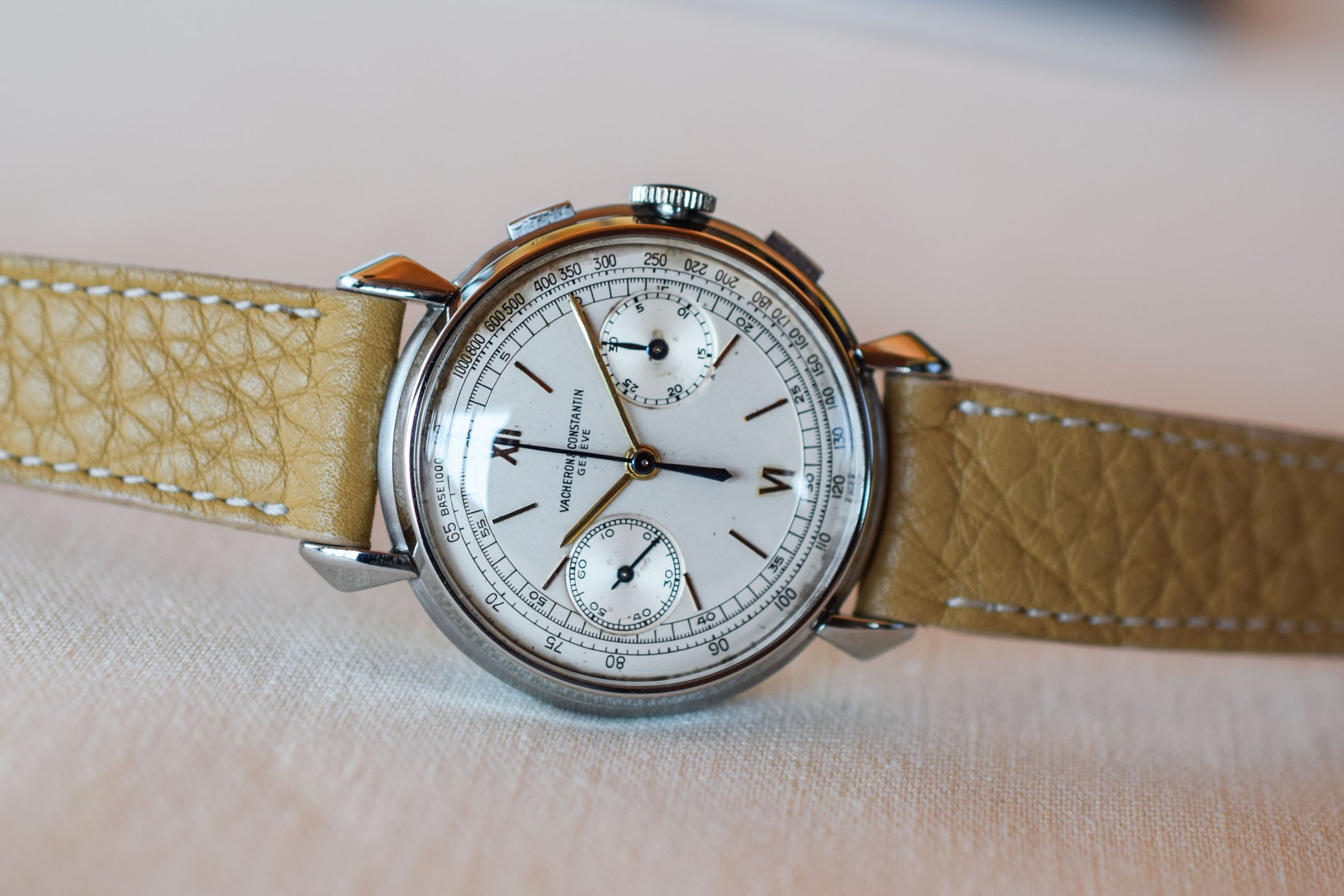
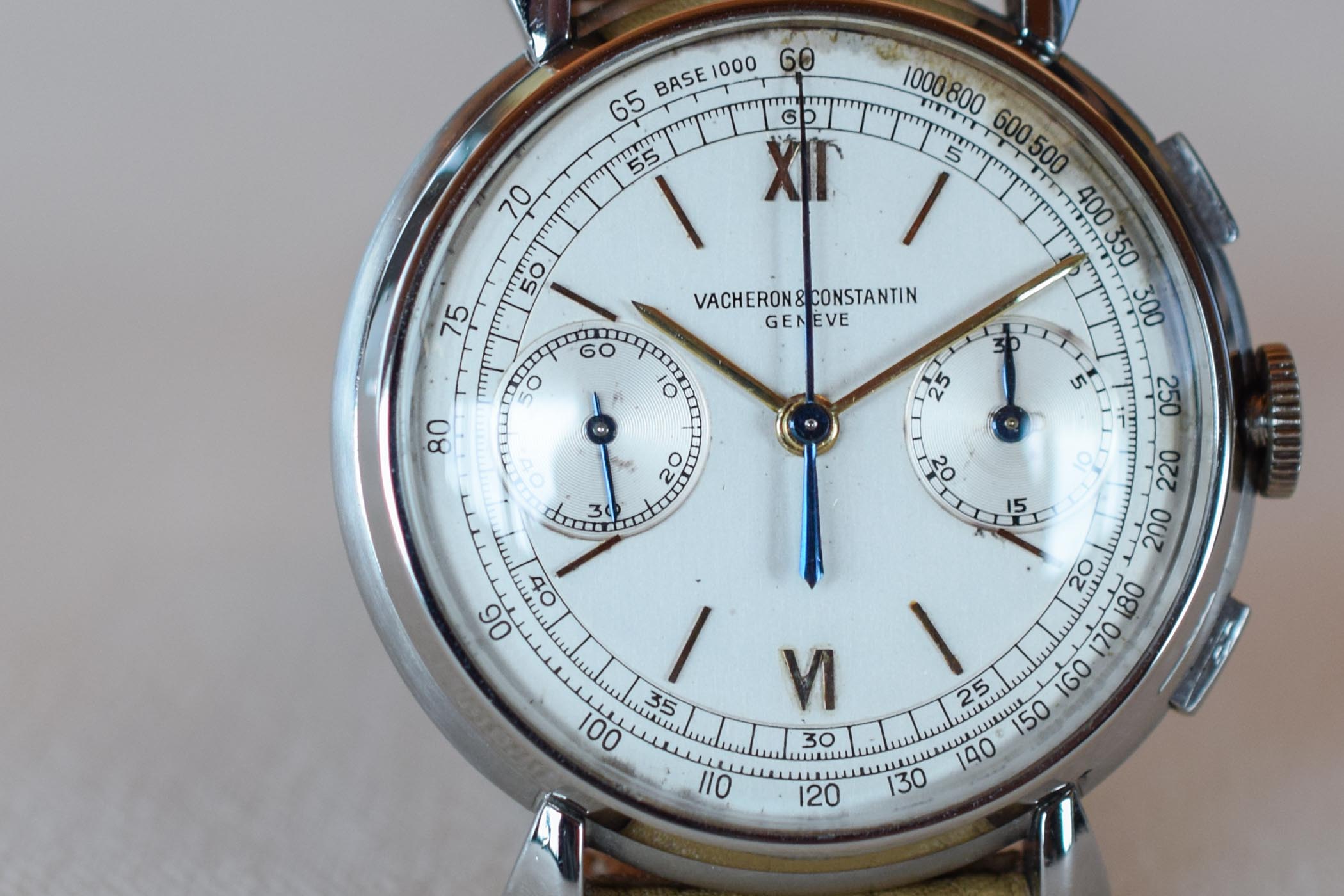
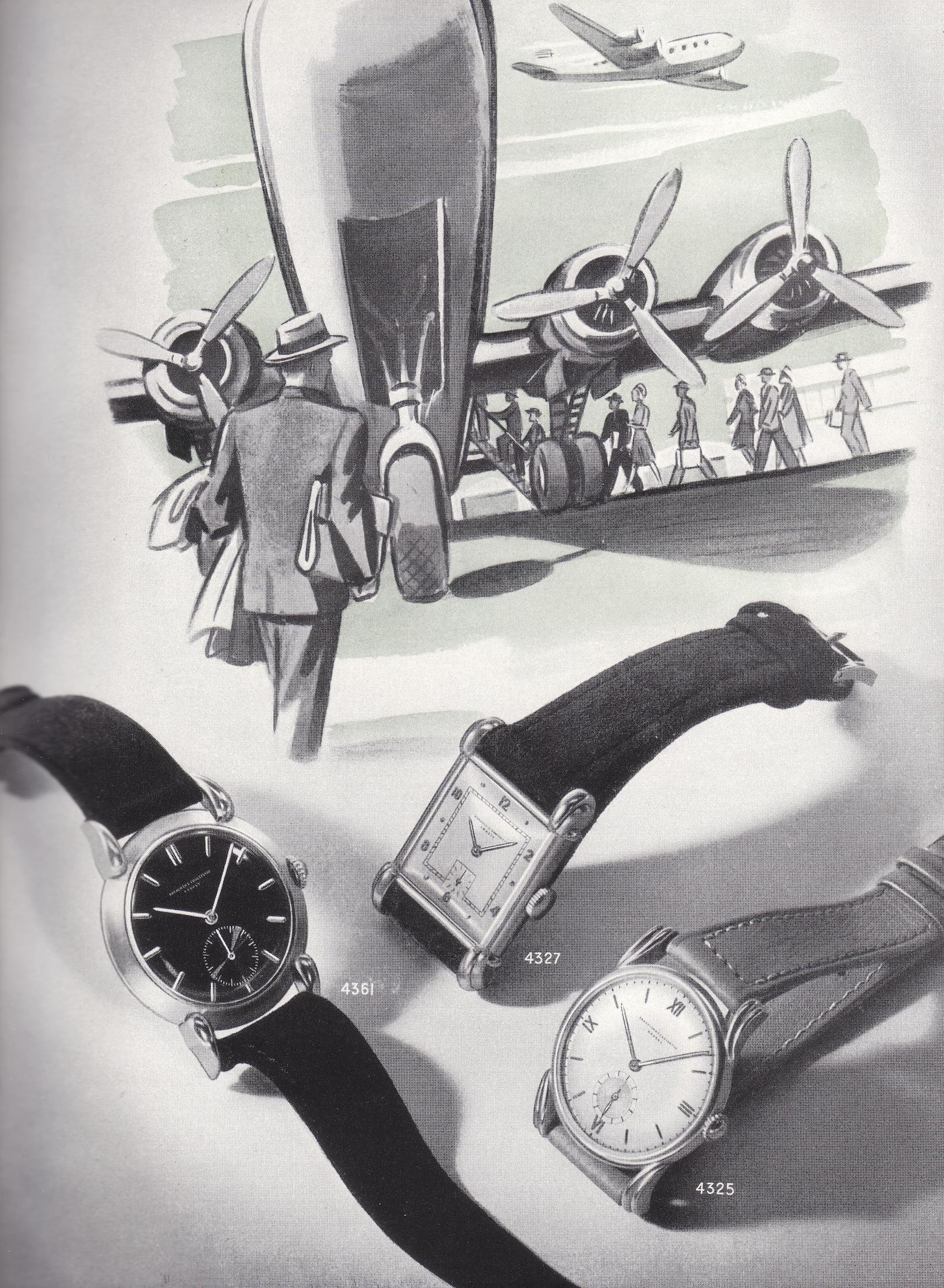

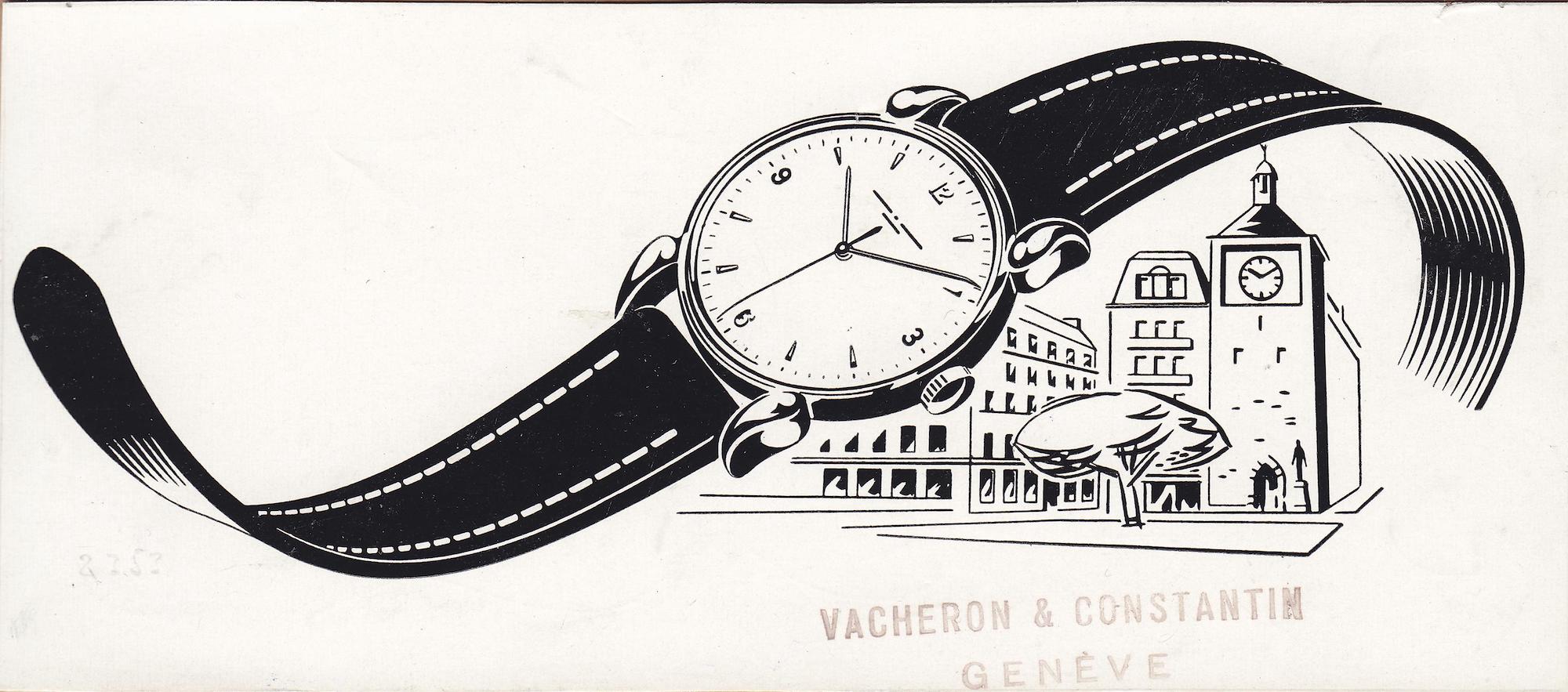
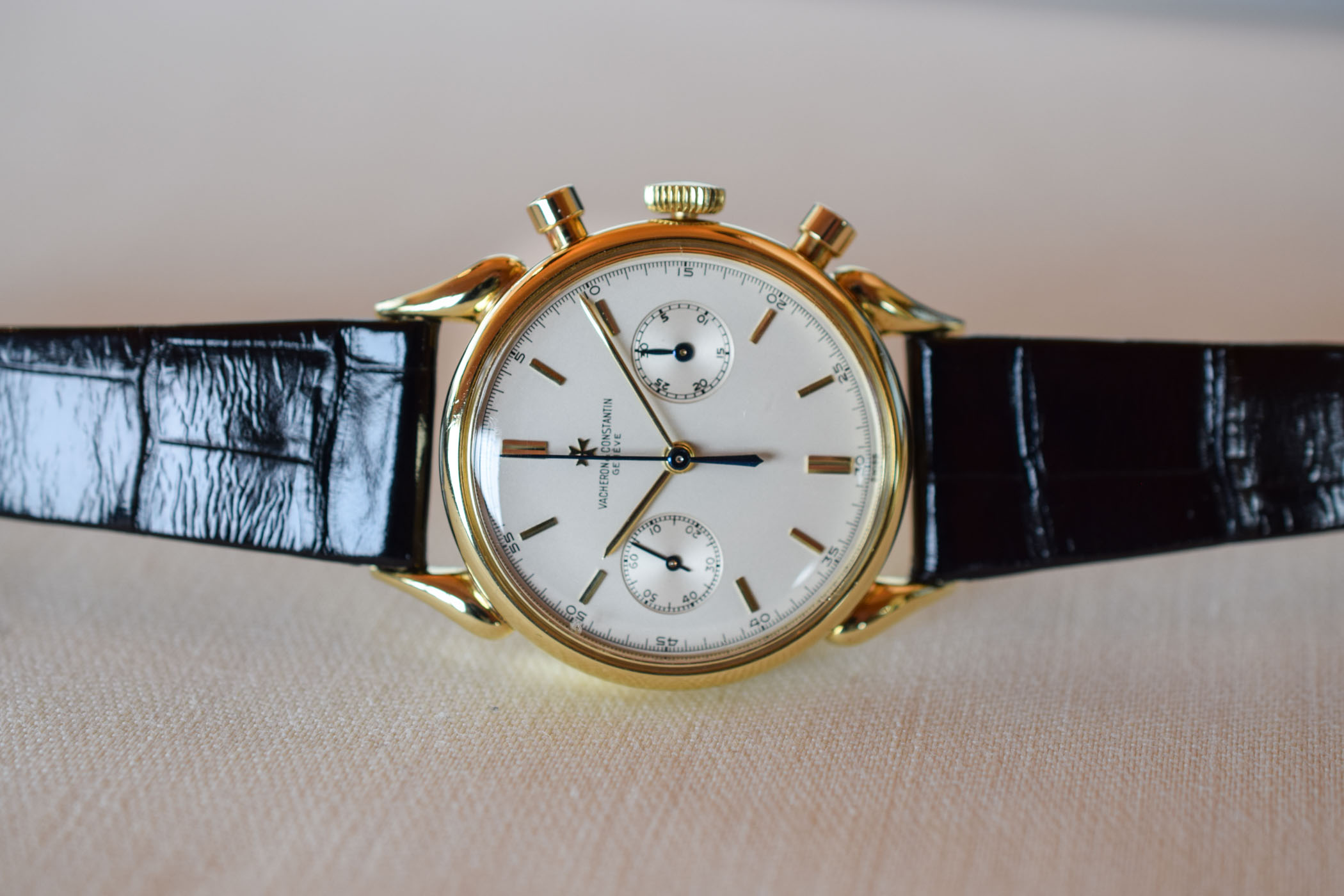
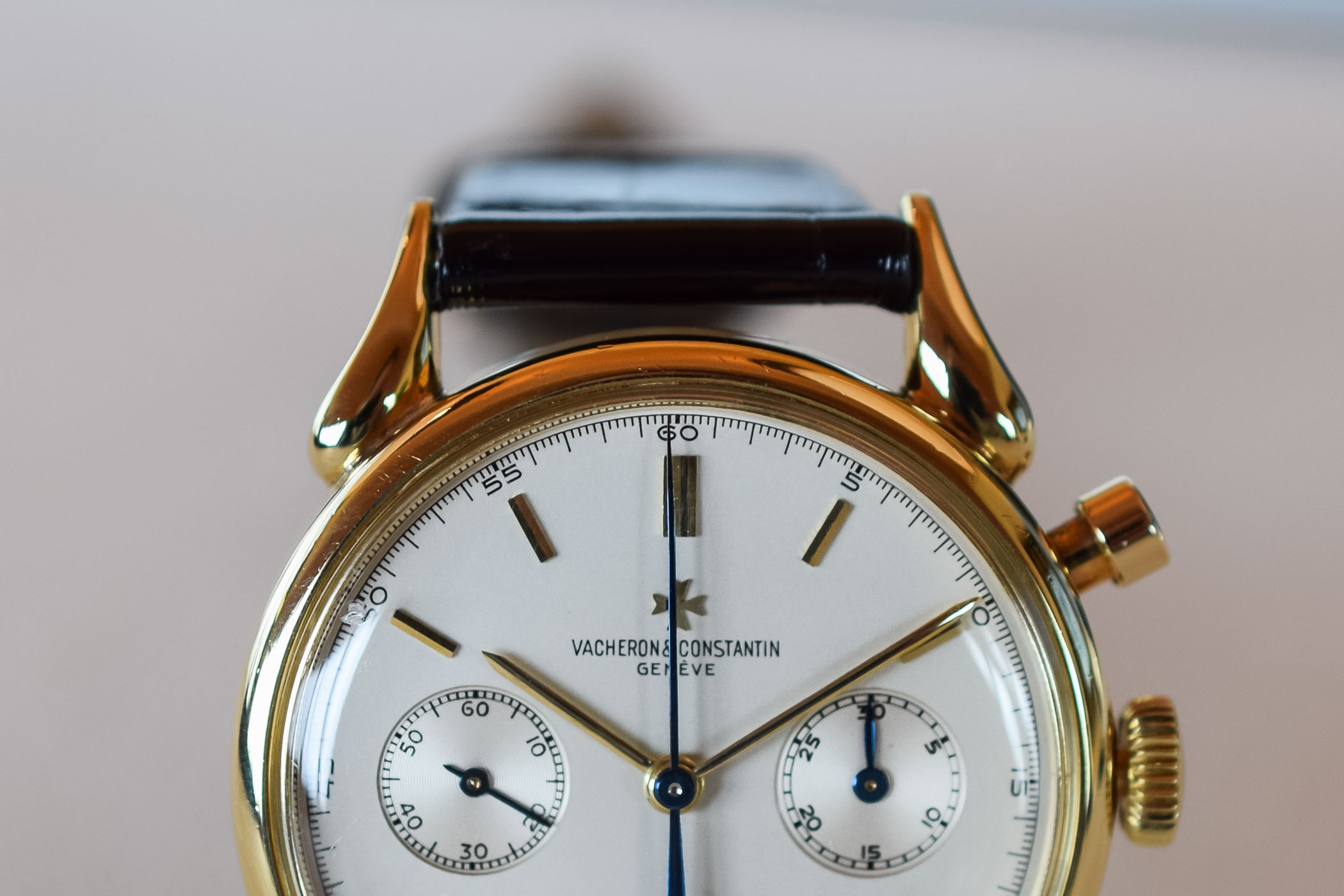





4 responses
Just wow!
The rose gold version is beautiful. For me, as a high-grade manual-wind chronograph it’s second only in desirability to Patek’s 5170G, and just a nose ahead of Lange’s 1815.
I think I must just be old fashioned. The earlier ones all looked fabulous especially the first pocket watch. The modern ones all looked a bit flashy. The calibre 3500 just looks like kinetic art, a beautiful thing irrespective if it’s time keeping abilities. A really interesting article
I’m really beginning to think that, aesthetically, watch design peaked in The Fifties.